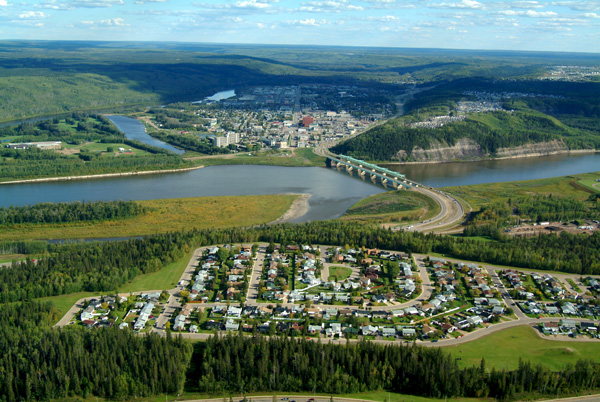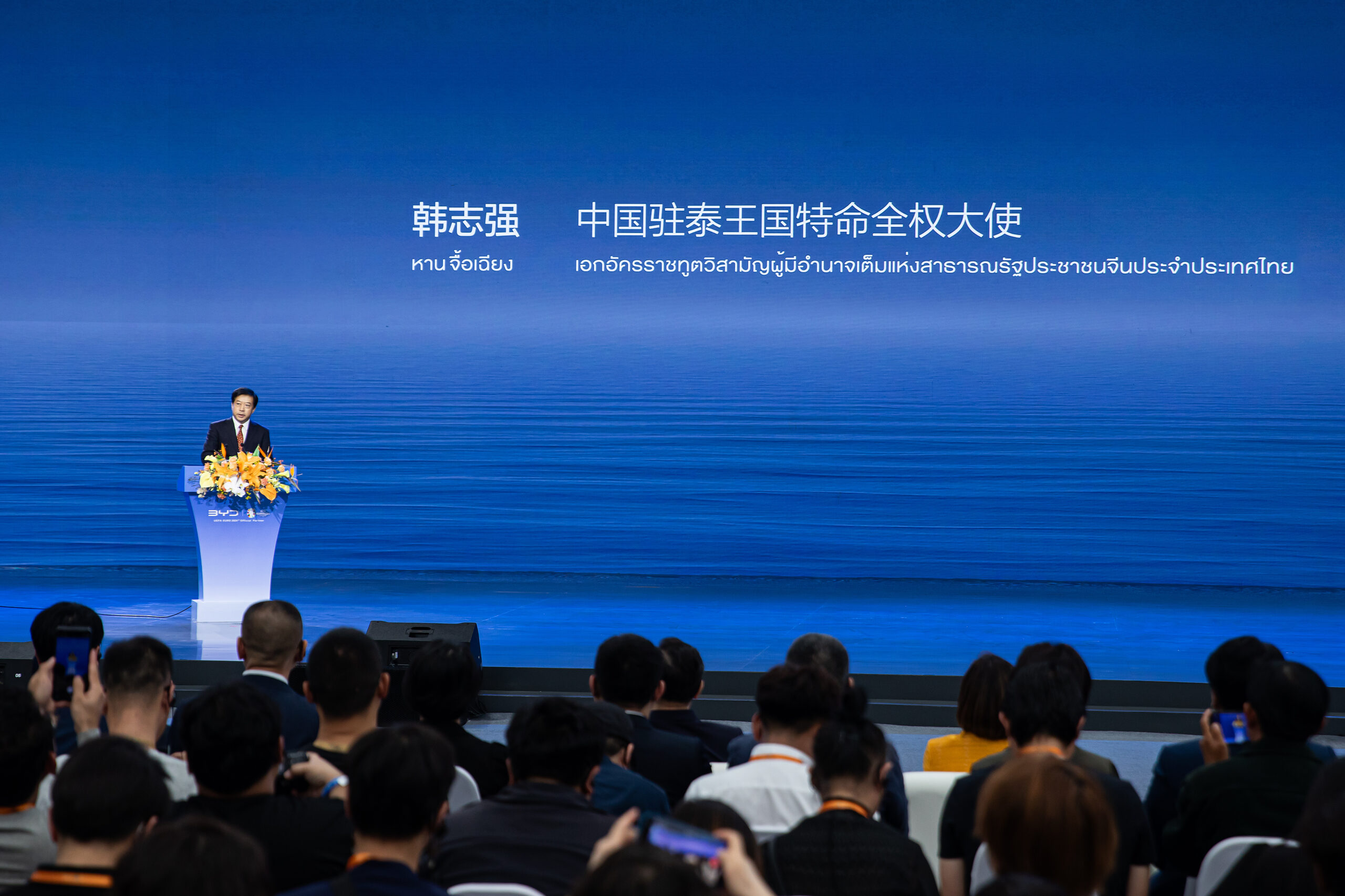Sign up for daily news updates from CleanTechnica on email. Or follow us on Google News!
With winter weather in full force across the US, many of us are wondering if we can really heat our homes in frigid temperatures without burning fossil fuels. In the fall of 2021, we had the same question. The 35-year-old gas furnace at our family’s duplex in Cleveland, Ohio, was on the fritz. We’re big advocates of getting rid of fossil fuels, but were admittedly nervous about removing the furnace and heating exclusively with heat pumps. Sure, we do this at our own house in Portland, Oregon, but Cleveland winter temperatures average 15 degrees Fahrenheit colder than Portland with nearly 50 inches more snow. Could this home keep our Airbnb guests warm through a cold Midwestern winter without burning fossil fuels? And what would heat pumps do to our energy bills?
At the time, we didn’t know about cold climate heat pumps which have kept homes toasty in the coldest parts of the world for decades. Norway, Sweden, and Finland have some of the world’s highest heating needs and yet lead in heat pump installations, which have grown exponentially in Scandinavia over the last two decades. Nearly half of all Nordic homes have heat pumps, while only 13% of US homes do. In Japan, birthplace of the heat pump, 90% of homes use them, including colder cities like Saporo that get hundreds of inches of snow per year.

In the US, while heat pump sales surpassed gas furnaces for the first time in 2022, most heat pump penetration is in the Southeastern parts of the country where winters are mild. But our fourth coldest state, Maine, had a 300% increase in heat pump sales from 2018 to 2022 (9,000 to 28,000 annually) and now has over 100,000 heat pumps installed in its 600,000 homes.
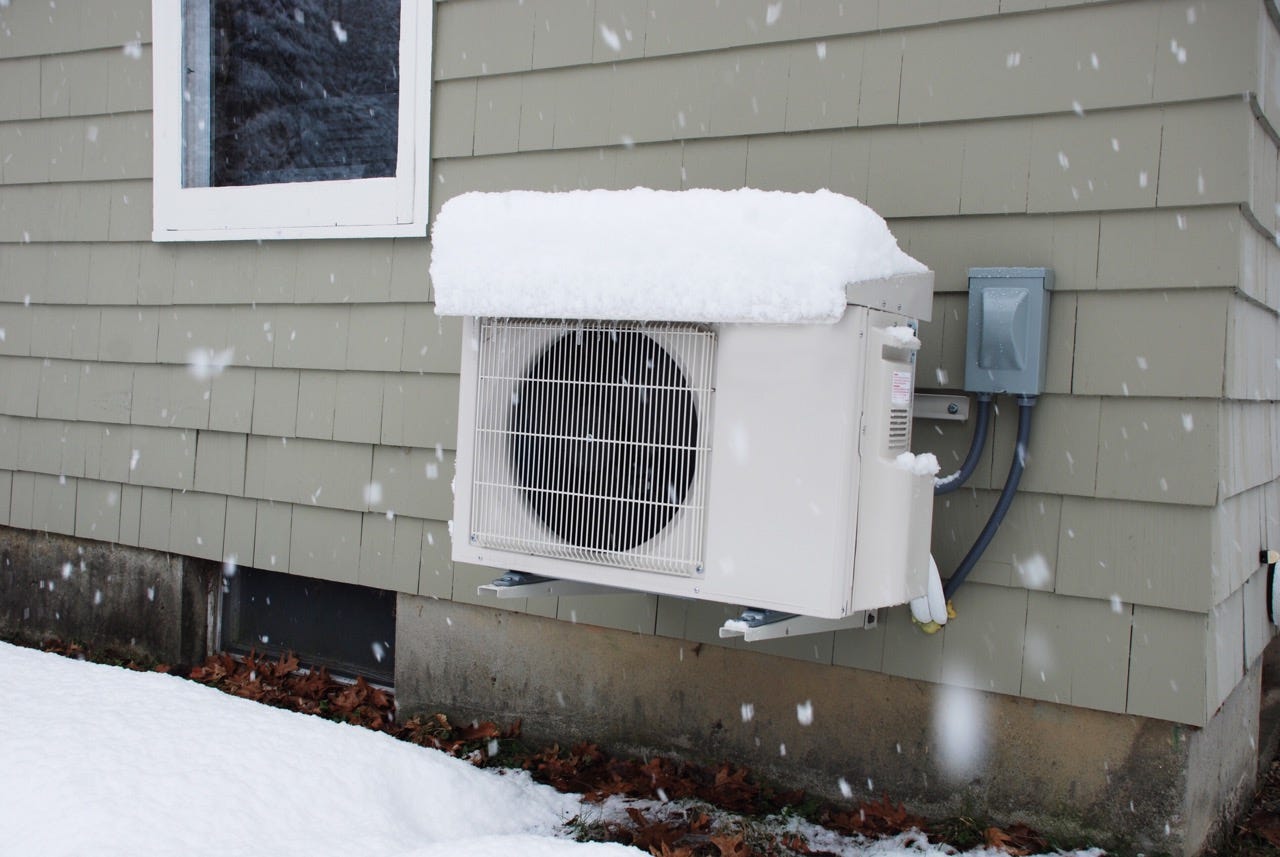
Selecting The Right Heat Pump Model For Your Climate
As winter approached, we explored both heat pumps and a replacement gas furnace (for the sake of comparison) with bids from four companies. Since we don’t live in Cleveland, we didn’t have an existing contractor network. To find reputable heat pump installers, we used manufacturer websites that allow you to search for certified contractors in your area. (You can do this on Mitsubishi, Lennox, and Daikin sites for example).
We also researched how cold climate heat pumps work their magic. All cold climate heat pumps have variable speed compressors (see our heat pump post for an explanation), which are more efficient because they can ramp up and down as temperatures change. Cold climate heat pumps have a number of other features: 1) electronic expansion valves that more quickly change refrigerant pressure; 2) intelligent defrost cycles that melt any outdoor coil frost build up; 3) drain pan de-icing to prevent any condensate from freezing; and 4) computers and algorithms unique to cold climate operation.
We found a couple of great resources to help with our decision process:
1) Carbon Switch reviewed cold climate heat pumps and noted how much heat they produce in cold climates. (Mitsubishi tops the rankings.)

2) ENERGY STAR’s cold climate heat pump classification explains which heat pumps are certified for chilly places. On its website, under both ductless or ducted options, you can check a “cold climate” box (blue one below) to filter for heat pumps with that rating.
ENERGY STAR’s website shows numbers like HSPF2 (red box below) which measures how efficiently a heat pump heats a space (an 8.5 score is good; over 10 is excellent; and some top rated models have scores above 15.) The site also shows how much heat a heat pump produces at 5 degrees Fahrenheit (orange box) which you can compare to how much heat they produce at 47 degrees (green box).

3) Electrify Now’s checklist of things to ask a heat pump contractor helps ensure you’re getting the right-sized heat pump for your abode. (Full disclosure: Joe is an active Electrify Now volunteer.)
The Bids Are In
We received bids and recommendations from four contractors and were delighted, and somewhat surprised, that the cold climate heat pump, (a Daikin Fit) which also provides air conditioning, was the cheapest option at ~$12,000. The efficient gas furnace plus air conditioning was significantly pricier at $16,000.
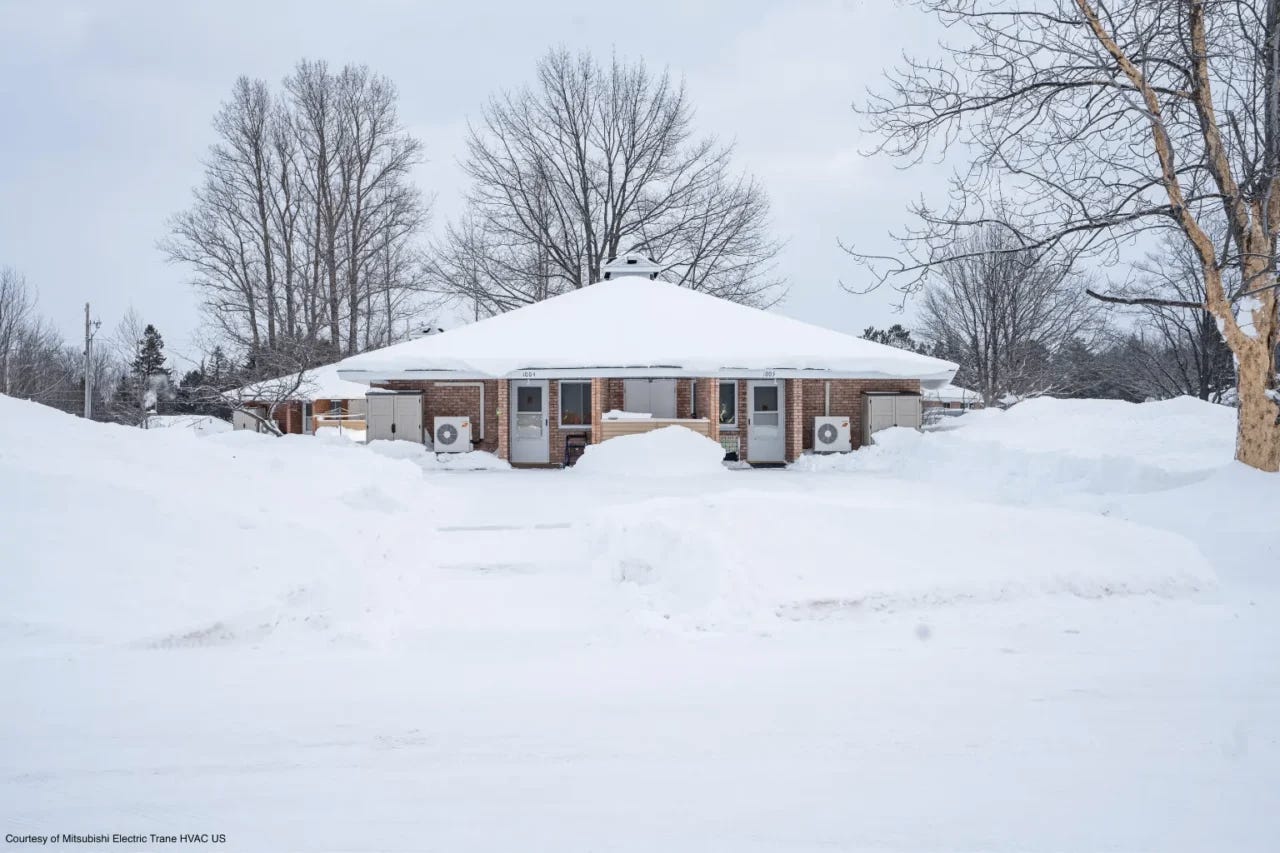
Cold climate heat pumps typically cost 20-30% more than standard heat pumps because of the added features that make them function well in cold temperatures. There are many cold climate heat pumps that work in even colder temperatures, but we went for the one with the lowest upfront cost.
The fact that the Daikin Fit ranked #3 in Carbon Switch’s review above made us confident in the selection.
Cold Climate Heat Pump Installation
In late October 2021, our selected contractor removed the ancient gas furnace and air conditioner, capped the gas line and installed a new, whole house heat pump. We opted for a ducted system because of the layout and existing ducts. The new heat pump system looks a lot like the old gas + AC, with an indoor unit (air handler) in the basement and an outdoor unit that looks similar to the old AC.
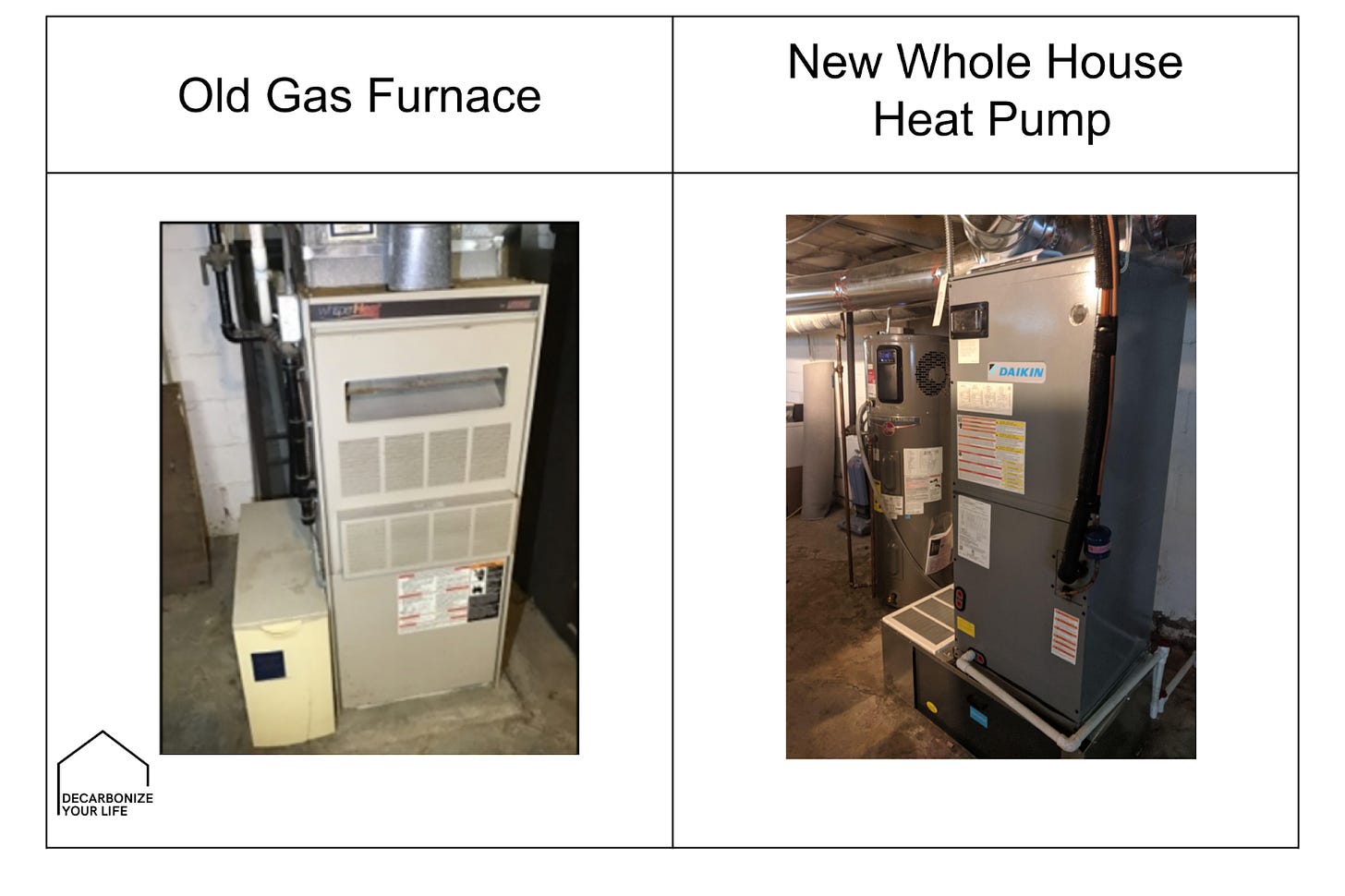
We did install electric resistance backup (sometimes called “strip heat”) to supplement the heat pump on the coldest days. Using electric resistance is more inefficient and expensive, but our installer assured us the heat pump works at full capacity down to 5 degrees Fahrenheit and has smart algorithms that add little bursts of electric resistance heating when the temperature falls below that.
Our install followed a couple of best practices for cold climate heat pumps, including: 1) raising the outdoor unit off the ground so it doesn’t sit in ice or snow (snow baffles can help if it has to sit on the ground); and 2) conducting a heating/cooling load calculation to avoid oversizing the heat pump. It’s easy to assume bigger is better, but sizing the heat pump to your home is essential as an oversized unit will frequently turn off and on which leads to poor efficiency and shorter lifespan than a properly sized heat pump that runs continuously.
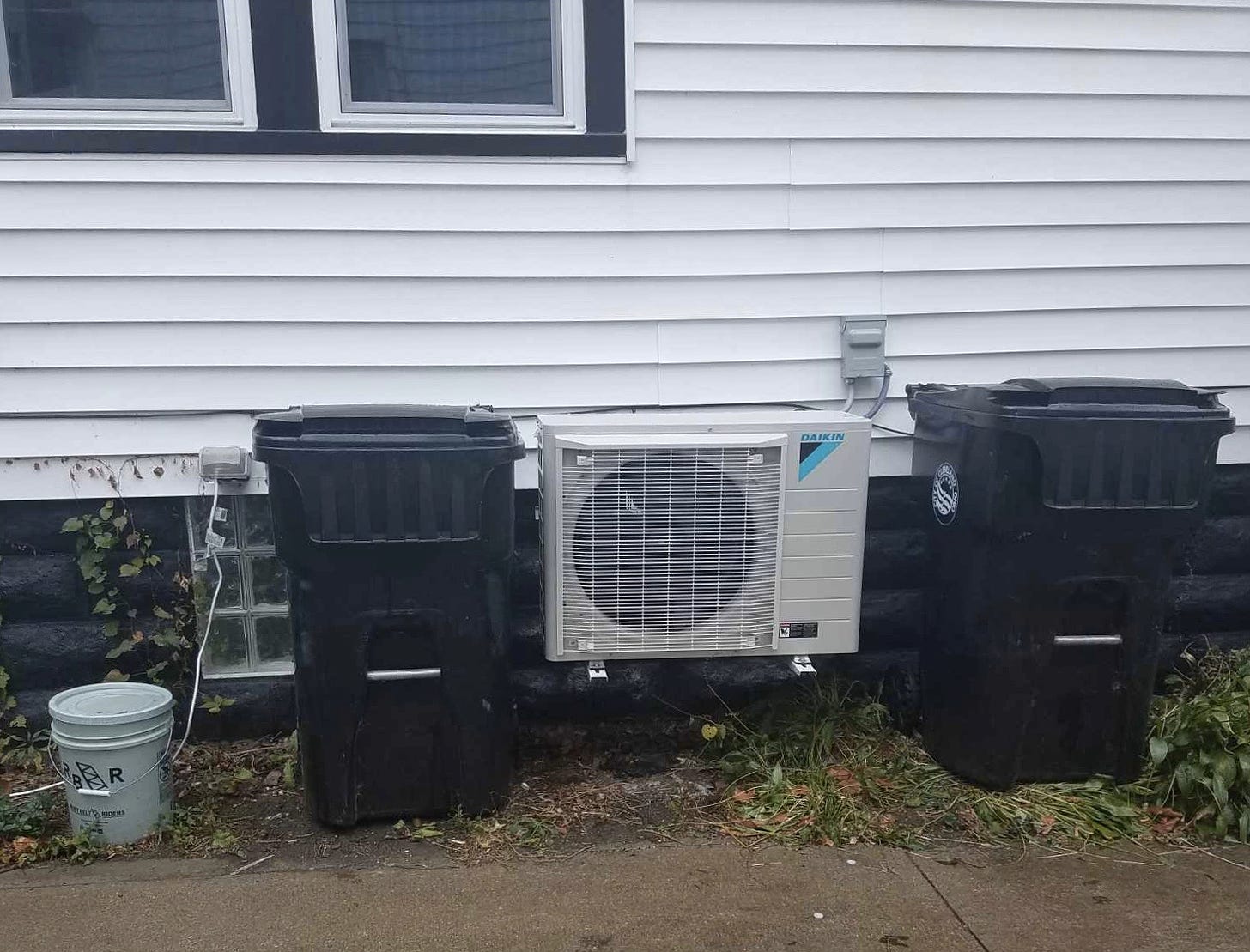
Utility Costs & Comfort
After installation, we waited for the bills and Airbnb reviews to roll in. Would the heat pump use a lot of electric resistance and increase utility costs? Would our guests notice a difference? The Cleveland duplex creates a perfect case study, with one side running on heat pumps and the other still burning gas. We are happy to report that after adding heat pumps, our utility bills remained almost exactly the same. The total energy costs for each side of the duplex were, remarkably, within $10 of each other after the first year. And we’ve not had one “I’m cold!” complaint from guests in the two years since install.
We hope our experience convinces you that even if you live in a place where temperatures regularly drop below zero, there’s a heat pump for you. A heat pump system works great in a Midwestern state and doesn’t cost any more to buy or operate than a gas furnace. We’re proud to join millions of homeowners — from Maine to Norway to Japan, and now Cleveland — who are ditching fossil fuels for clean heating machines that keep homes toasty in the most frigid climates.
For a deeper dive into cold climate heat pumps, watch a webinar we did with Daikin, Mitsubishi and Efficiency Maine back in December of 2022.

This article is part of a series called Decarbonize Your Life. With modest steps and reasonable costs our family has dramatically reduced emissions and is sequestering what remains through a small reforestation project. Our life is better for it. If we can do it, you can too.
Have a tip for CleanTechnica? Want to advertise? Want to suggest a guest for our CleanTech Talk podcast? Contact us here.
Latest CleanTechnica TV Video
I don’t like paywalls. You don’t like paywalls. Who likes paywalls? Here at CleanTechnica, we implemented a limited paywall for a while, but it always felt wrong — and it was always tough to decide what we should put behind there. In theory, your most exclusive and best content goes behind a paywall. But then fewer people read it!! So, we’ve decided to completely nix paywalls here at CleanTechnica. But…
Thank you!
CleanTechnica uses affiliate links. See our policy here.


